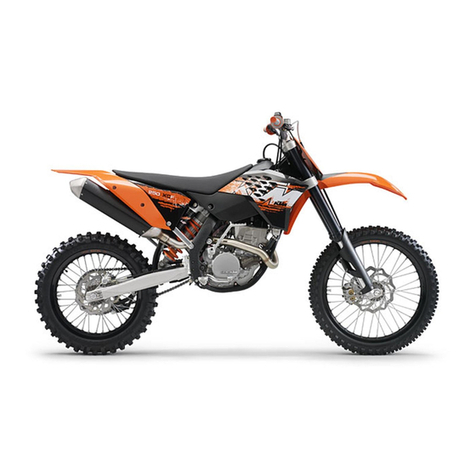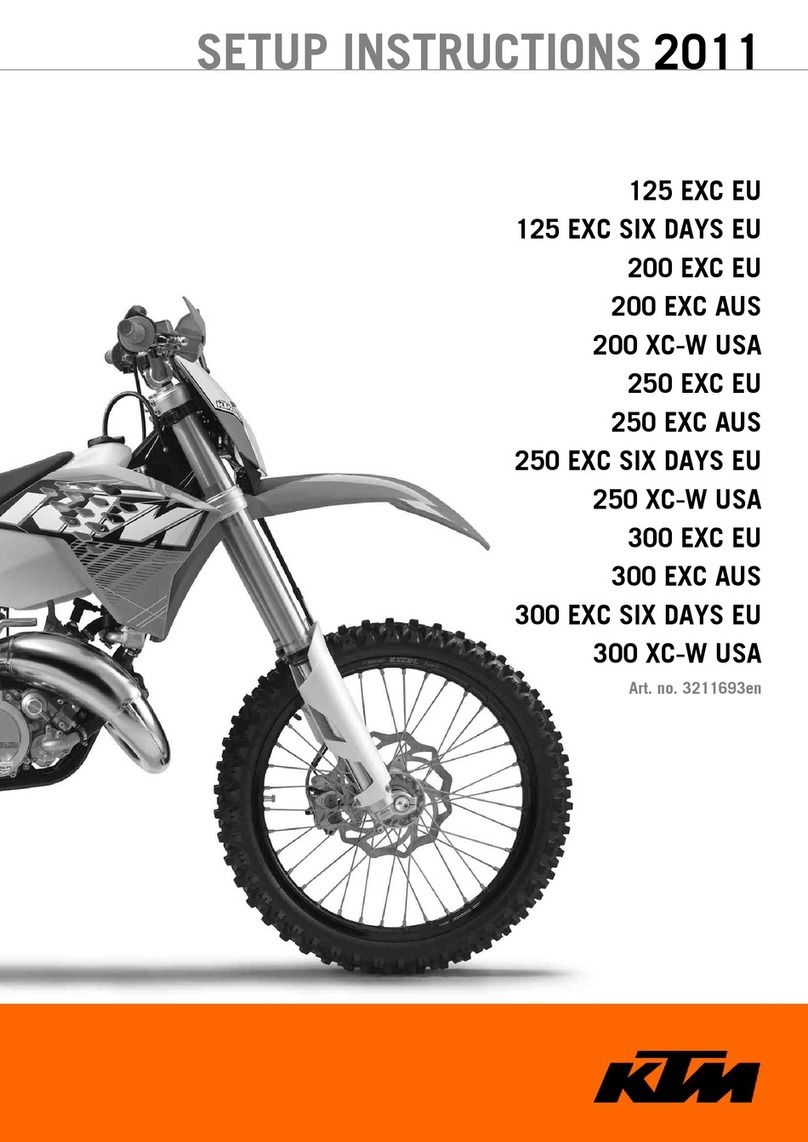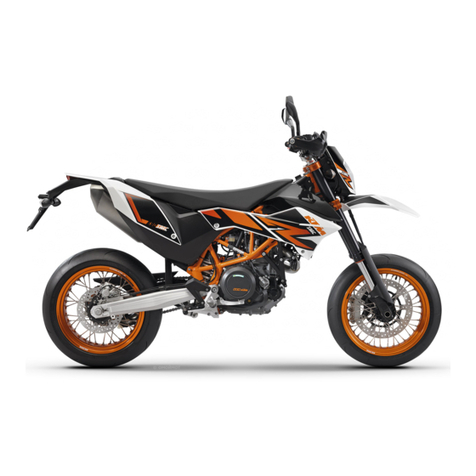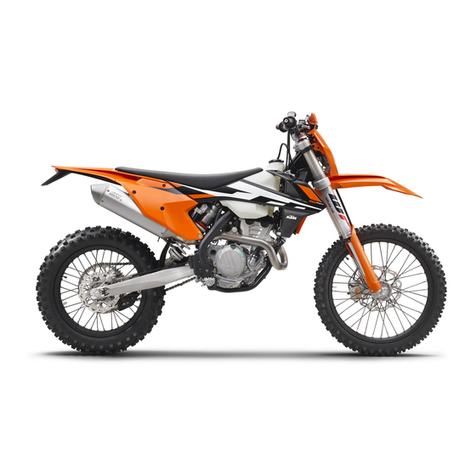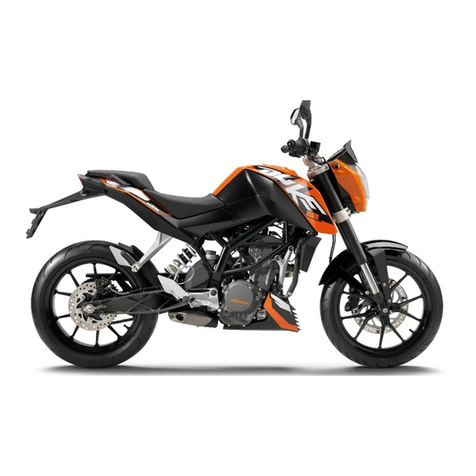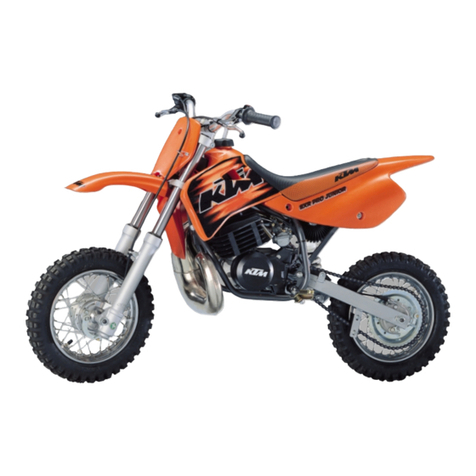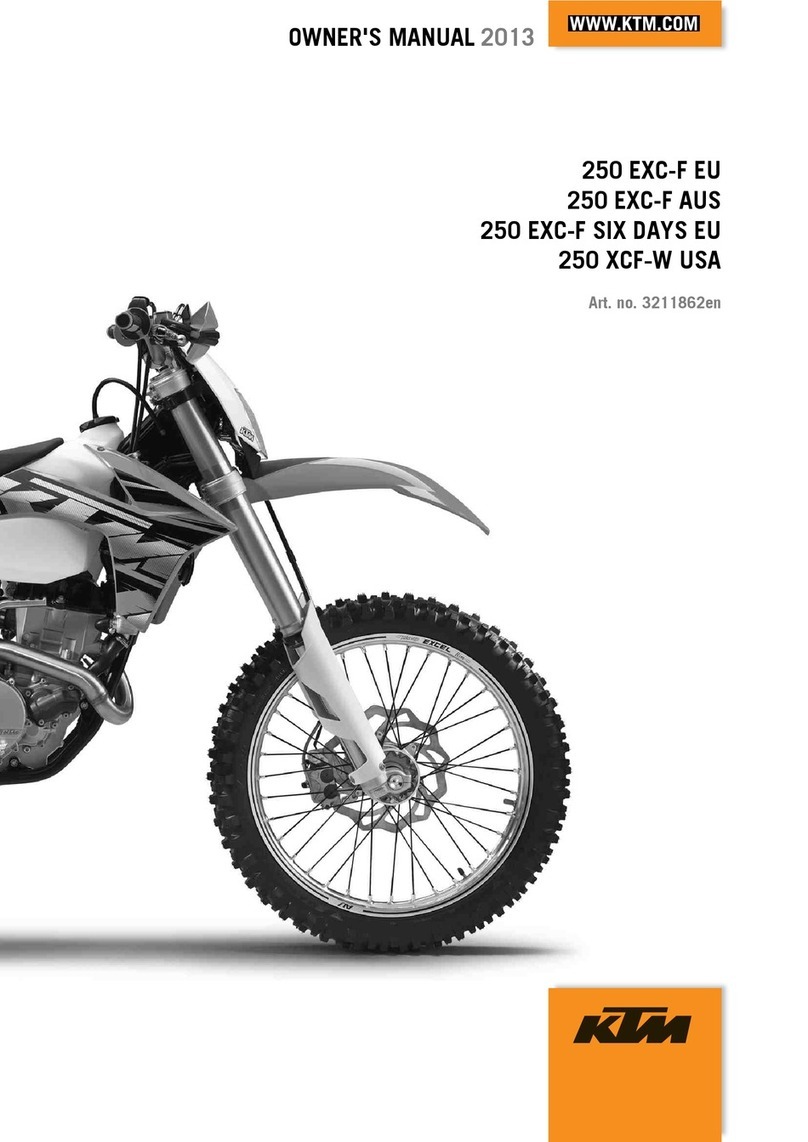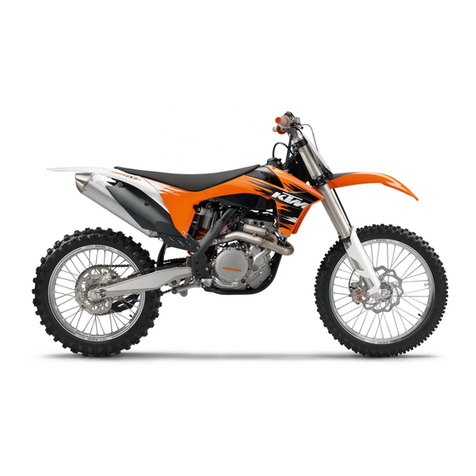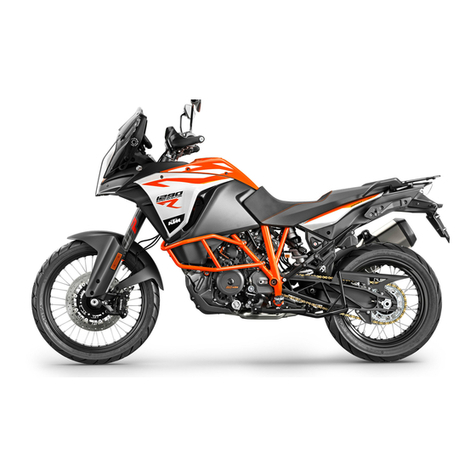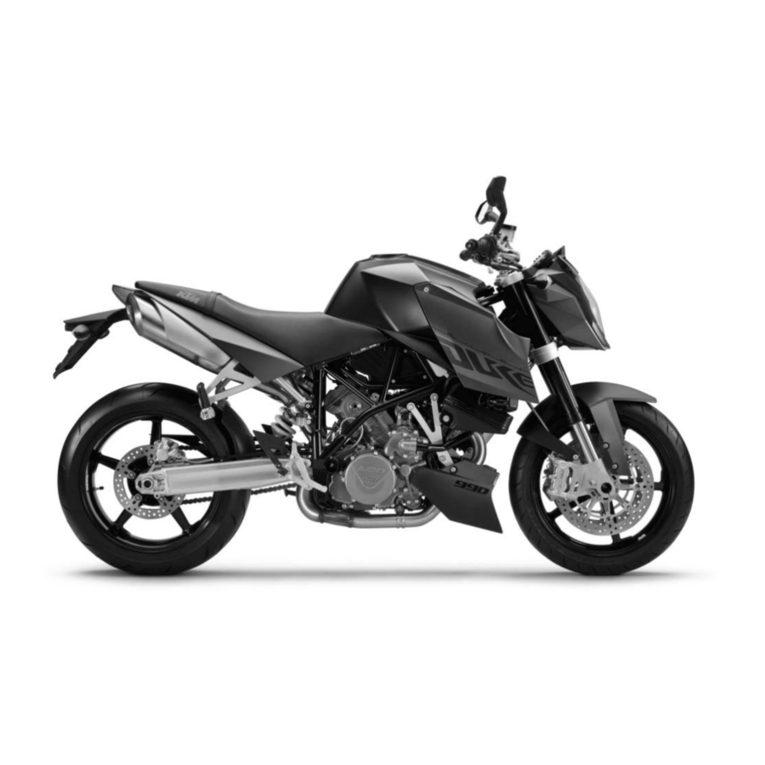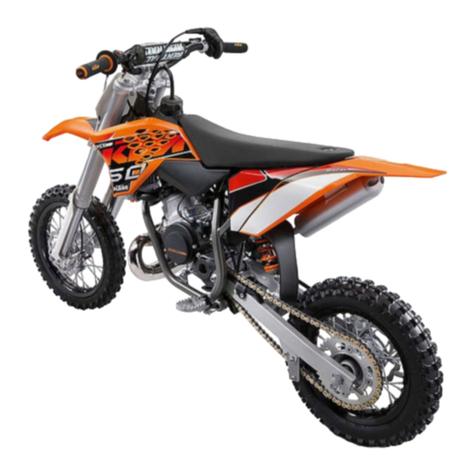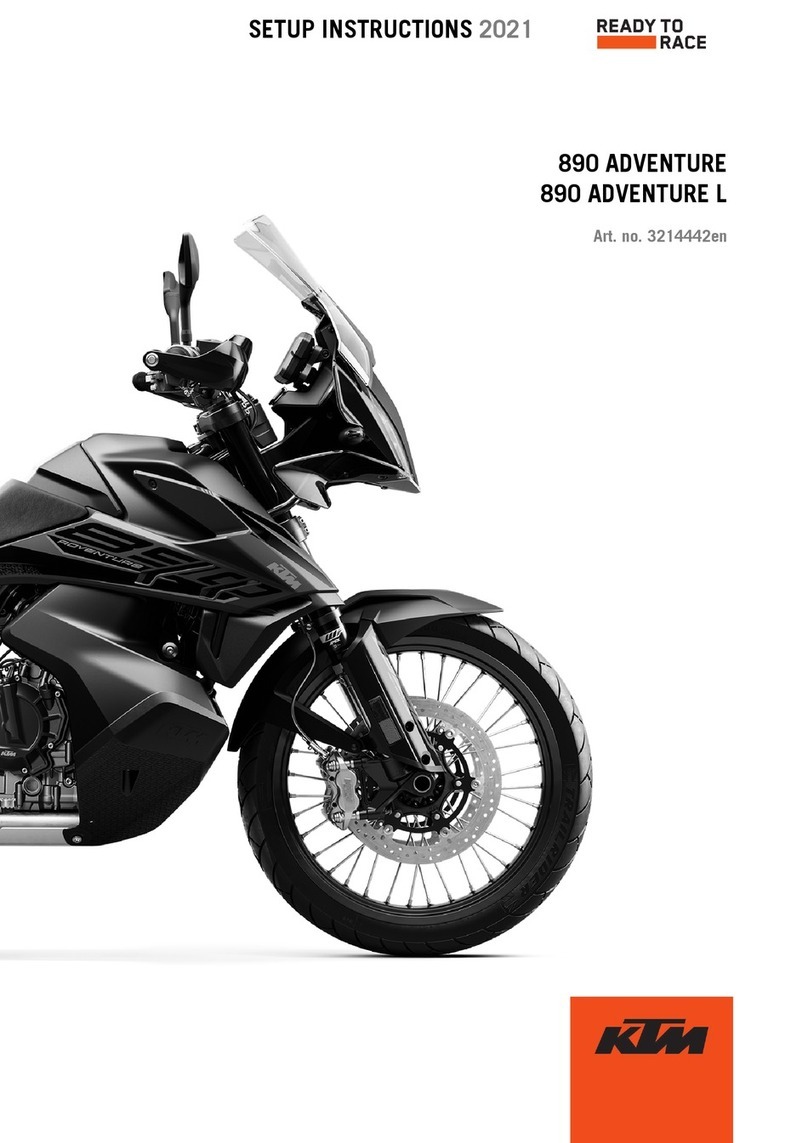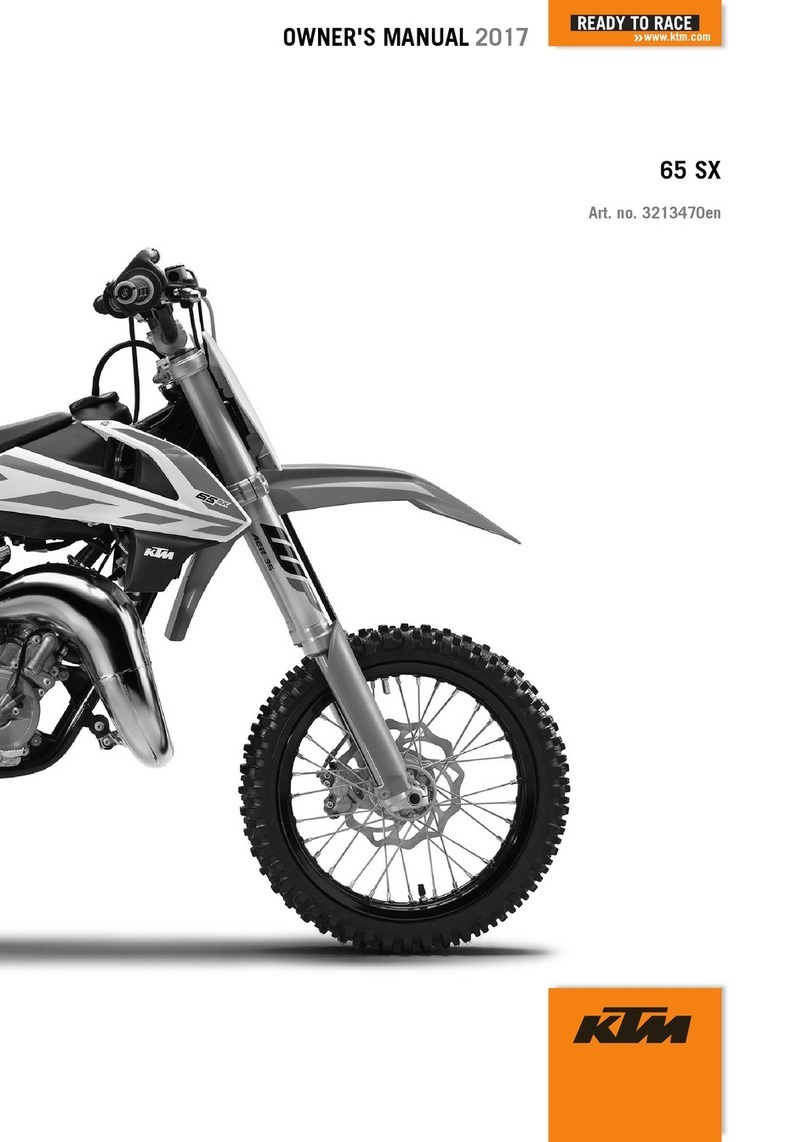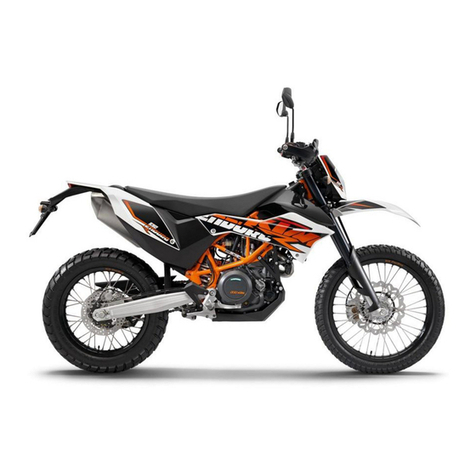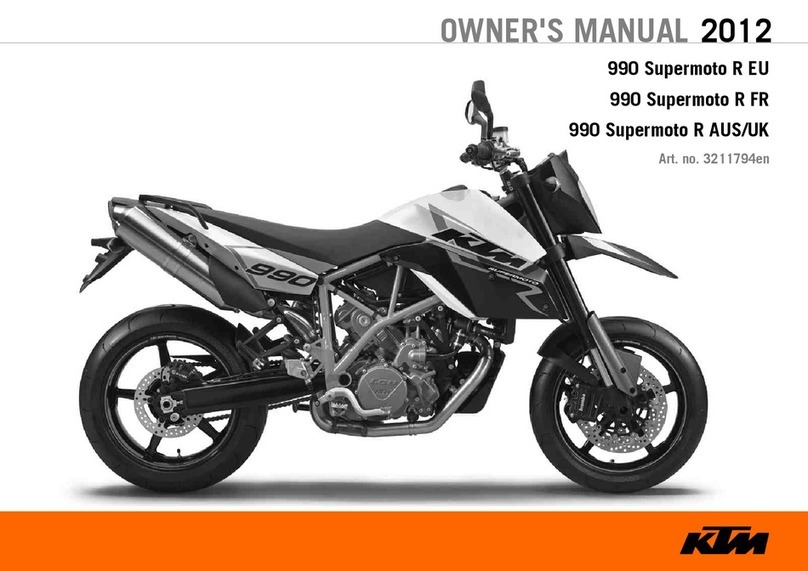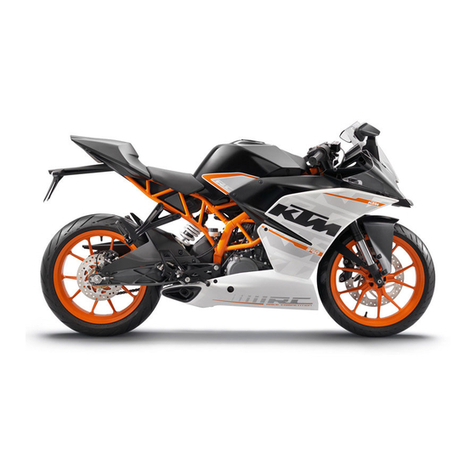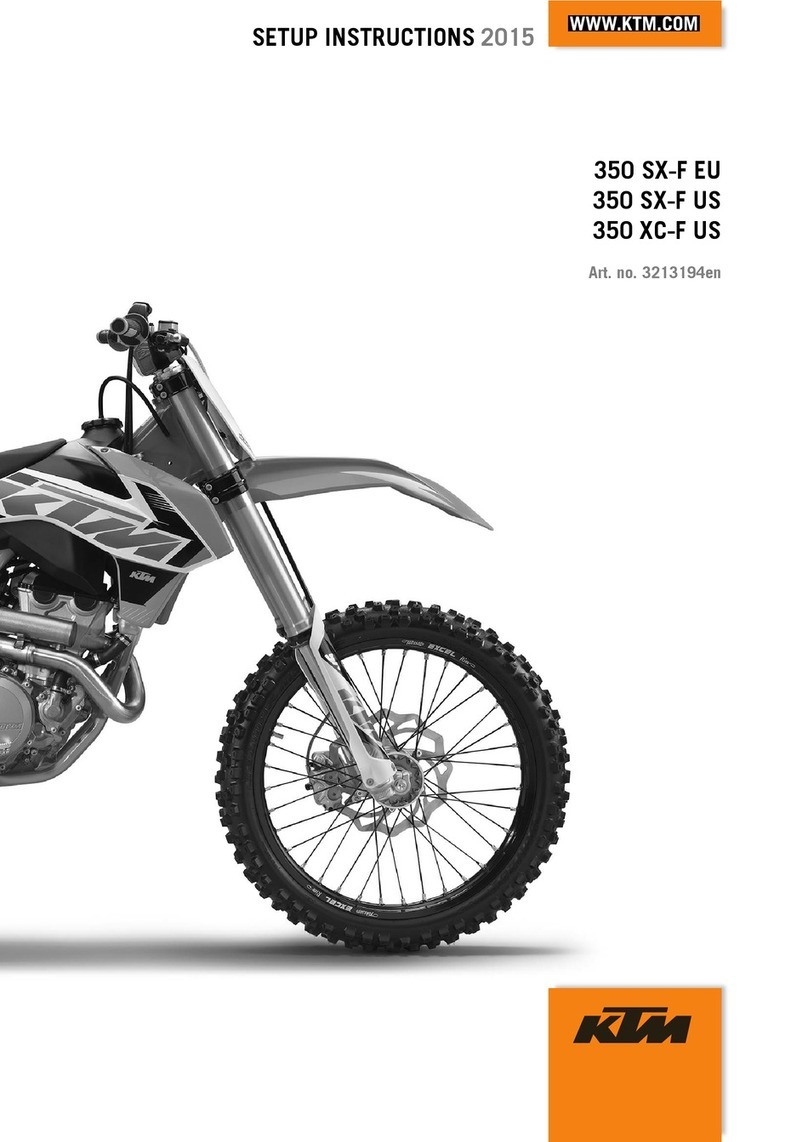ENGLISH
3
Page
SERIAL NUMBER LOCATIONS . . . . . . . . . . . . . . . . . . . . . .4
Chassis number . . . . . . . . . . . . . . . . . . . . . . . . . . . . . . . .4
Engine number, engine type . . . . . . . . . . . . . . . . . . . . . .4
OPERATION INSTRUMENTS . . . . . . . . . . . . . . . . . . . . . . .4
Clutch lever . . . . . . . . . . . . . . . . . . . . . . . . . . . . . . . . . .4
Hand brake lever . . . . . . . . . . . . . . . . . . . . . . . . . . . . . . .4
Speedometer, indicator lamps . . . . . . . . . . . . . . . . . . . . .5
Ignition lock . . . . . . . . . . . . . . . . . . . . . . . . . . . . . . . . . .5
Combination switch . . . . . . . . . . . . . . . . . . . . . . . . . . . .5
Flasher switch . . . . . . . . . . . . . . . . . . . . . . . . . . . . . . . . .5
Filler cap . . . . . . . . . . . . . . . . . . . . . . . . . . . . . . . . . . . . .6
Fuel . . . . . . . . . . . . . . . . . . . . . . . . . . . . . . . . . . . . . . . . .6
Fuel tap . . . . . . . . . . . . . . . . . . . . . . . . . . . . . . . . . . . . . .6
Oil tank . . . . . . . . . . . . . . . . . . . . . . . . . . . . . . . . . . . . . .7
Choke . . . . . . . . . . . . . . . . . . . . . . . . . . . . . . . . . . . . . . .7
Shift lever . . . . . . . . . . . . . . . . . . . . . . . . . . . . . . . . . . . .7
Kickstarter . . . . . . . . . . . . . . . . . . . . . . . . . . . . . . . . . . . .7
Foot brake pedal . . . . . . . . . . . . . . . . . . . . . . . . . . . . . . .7
Steering lock . . . . . . . . . . . . . . . . . . . . . . . . . . . . . . . . . .8
Center stand . . . . . . . . . . . . . . . . . . . . . . . . . . . . . . . . . .8
Baggage carrier . . . . . . . . . . . . . . . . . . . . . . . . . . . . . . . .8
Compression damping of fork . . . . . . . . . . . . . . . . . . . . .8
Rebound damping of fork . . . . . . . . . . . . . . . . . . . . . . . .8
Compression damping of shock absorber . . . . . . . . . . . .9
Rebound damping of shock absorber . . . . . . . . . . . . . . .9
DRIVING INSTRUCTIONS . . . . . . . . . . . . . . . . . . . . . . . . .10
PERIODIC LUBRICATION- AND MAINTENANCE-SCHEDULE
. .13
MAINTENANCE WORK ON CHASSIS AND ENGINE . . . . .14
Dismounting and mounting of seat . . . . . . . . . . . . . . . .14
Checking and adjusting the steering head bearing . . . . .15
How to change the handlebar position . . . . . . . . . . . . .15
Breather plug front fork . . . . . . . . . . . . . . . . . . . . . . . . .16
Cleaning the dust sleeves of the telescopic fork . . . . . . .16
Changing the spring preload of the shock absorber . . . .16
Pivot bearing . . . . . . . . . . . . . . . . . . . . . . . . . . . . . . . . .17
Check chain tension . . . . . . . . . . . . . . . . . . . . . . . . . . .17
Correct chain tension . . . . . . . . . . . . . . . . . . . . . . . . . .17
Page
Chain maintenance . . . . . . . . . . . . . . . . . . . . . . . . . . .18
Chain wear . . . . . . . . . . . . . . . . . . . . . . . . . . . . . . . . .18
General informations about KTM disc brakes . . . . . . . .18
Adjusting of free travel at the hand brake lever . . . . . .19
Checking of brake fluid level - front brake . . . . . . . . . .19
Refilling the front brake fluid reservoir . . . . . . . . . . . . .19
Checking the front brake pads . . . . . . . . . . . . . . . . . . .19
Changing the basic position of the brake pedal . . . . . .20
Checking rear brake fluid level . . . . . . . . . . . . . . . . . . .20
Refilling the rear brake fluid reservoir . . . . . . . . . . . . . .20
Checking the rear brake pads . . . . . . . . . . . . . . . . . . . .20
Dismounting and mounting the front wheel . . . . . . . . .21
Dismounting and mounting the rear wheel . . . . . . . . .21
Tires, air pressure . . . . . . . . . . . . . . . . . . . . . . . . . . . . .22
Checking spoke tension . . . . . . . . . . . . . . . . . . . . . . . .22
Main fuse . . . . . . . . . . . . . . . . . . . . . . . . . . . . . . . . . . .23
Replacing head light lamp (H4) . . . . . . . . . . . . . . . . . .23
Charging the battery . . . . . . . . . . . . . . . . . . . . . . . . . .23
Cooling system . . . . . . . . . . . . . . . . . . . . . . . . . . . . . .24
Checking the coolant level . . . . . . . . . . . . . . . . . . . . . .24
Changing the original position of the clutch lever . . . . .24
Checking the oil level of the hydraulic durch . . . . . . . .25
Adjusting the idle speed . . . . . . . . . . . . . . . . . . . . . . . .25
Check transmision oil level . . . . . . . . . . . . . . . . . . . . . .25
Changing the transmission oil . . . . . . . . . . . . . . . . . . .25
Trouble shooting . . . . . . . . . . . . . . . . . . . . . . . . . . . . .26
CLEANING . . . . . . . . . . . . . . . . . . . . . . . . . . . . . . . . . . . .28
CONSERVATION FOR WINTER OPERATION . . . . . . . . .28
STORAGE . . . . . . . . . . . . . . . . . . . . . . . . . . . . . . . . . . . . .28
Use after period of storage . . . . . . . . . . . . . . . . . . . . . .28
TECHNICAL SPECIFICATIONS - CHASSIS . . . . . . . . . . . .29
TECHNICAL SPECIFICATIONS - ENGINE . . . . . . . . . . . . .30
HEAD WORD INDEX . . . . . . . . . . . . . . . . . . . . . . . . . . . .31
WIRING DIAGRAMME . . . . . . . . . . . . . . . . . . . . .Appendix
INDEX
